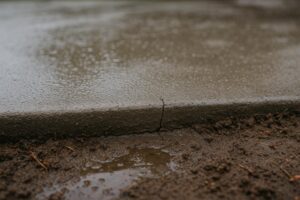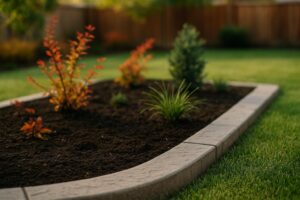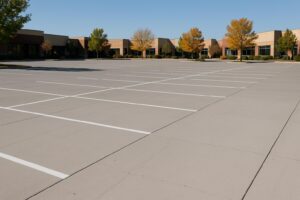Spring rains in Denver and Castle Rock bring the much-needed renewal that Colorado residents look forward to each year. However, while these showers nourish gardens and fill reservoirs, they also pose significant threats to concrete structures, particularly home foundations. Understanding how excess moisture impacts concrete integrity is essential for homeowners. Preventative measures, such as foundation repair, joint sealing, and concrete lifting, can play pivotal roles in maintaining property value and structural safety.
The Unique Impact of Colorado’s Climate on Concrete Foundations
Denver and Castle Rock experience a semi-arid climate marked by fluctuating temperatures, intense sunlight, and concentrated spring precipitation. These factors contribute to unique challenges for concrete surfaces. According to the National Weather Service, Denver averages nearly 2.5 inches of rainfall during the spring months alone, often falling in brief but intense downpours. This sudden influx of water can overwhelm drainage systems, saturate soil, and compromise foundation stability.
When moisture infiltrates the soil beneath a foundation, it causes the ground to expand and contract—a process known as soil heave. As the soil swells and shrinks, it exerts uneven pressure on the foundation. Over time, this stress leads to cracking, shifting, and in severe cases, foundation failure. The American Society of Civil Engineers (ASCE) reports that more than half of all home structural damage in the United States stems from soil movement due to moisture changes.
In addition, Denver’s notorious freeze-thaw cycles exacerbate the problem. Water that seeps into small cracks in concrete can freeze overnight, expanding and widening those fissures. The cycle repeats with each cold snap, gradually worsening the damage.
How Water Damages Concrete at the Microscopic Level
Concrete appears dense and impervious, but it’s actually a porous material. Microscopic pores and capillaries in concrete allow water to penetrate deep into the slab. Once inside, moisture reacts with compounds in the cement, triggering chemical processes like alkali-silica reaction (ASR). This reaction causes internal swelling and cracking, compromising the integrity of the slab from within.
Moreover, water carries soluble salts and minerals that can corrode embedded steel reinforcements. As these reinforcements corrode, they expand, further fracturing the surrounding concrete. The Portland Cement Association warns that corrosion-induced spalling is one of the leading causes of concrete deterioration in wet environments.
Unchecked water infiltration doesn’t just weaken the concrete—it also creates an ideal environment for mold growth, attracts pests, and leads to musty odors inside basements and crawl spaces.
The Role of Foundation Repair in Mitigating Water Damage
Foundation repair is a critical intervention for homeowners facing water-induced foundation damage. Early signs of trouble include:
- Cracks in basement walls or floors
- Doors and windows that stick or don’t close properly
- Sloping or uneven floors
- Visible gaps between walls and ceilings
At this stage, professional assessment is crucial. Techniques like piering—which involves driving steel piers deep into stable soil layers to support the foundation—can correct settling issues. Wall anchors and bracing systems are also employed to stabilize bowing walls caused by hydrostatic pressure.
A study by the Foundation Repair Association found that 75% of homes requiring foundation repair showed measurable improvements in stability and longevity when interventions were applied within the first two years of damage detection. Timely repairs not only prevent further deterioration but also protect the overall investment in the property.
How Joint Sealing Protects Concrete from Moisture Intrusion
Joint sealing is another highly effective preventive measure against water infiltration. Expansion joints in concrete are intentionally placed to allow controlled cracking as the slab expands and contracts. However, if these joints are left unsealed, they become prime entry points for water.
Professional-grade polyurethane or silicone sealants create a waterproof barrier that flexes with temperature changes while preventing moisture from reaching the subsurface layers. According to research published in the Journal of Construction and Building Materials, properly maintained joint seals can extend the functional life of concrete surfaces by up to 50%.
For Denver and Castle Rock homeowners, seasonal inspections and resealing are recommended due to the region’s temperature fluctuations and precipitation patterns.
The Benefits of Concrete Lifting to Address Water-Related Settlement
Concrete lifting, also known as slabjacking or polyjacking, offers a non-invasive solution for sunken or uneven concrete caused by soil erosion and water damage. The process involves injecting a specialized grout or polyurethane foam beneath the slab to fill voids and elevate the concrete back to its original position.
The International Association of Concrete Repair Specialists (IACRS) reports that polyjacking is effective in 90% of residential applications where water-induced soil settlement is the primary issue. The benefits of concrete lifting include:
- Cost-effective repairs compared to full slab replacement
- Minimal disruption to landscaping and property
- Rapid curing and readiness for use
- Long-lasting stabilization of affected areas
Concrete lifting not only restores the appearance and function of driveways, sidewalks, and patios but also alleviates additional stress on adjoining foundation structures.
Preventative Strategies for Homeowners in Denver and Castle Rock
While professional repairs are crucial, preventative maintenance is equally important for protecting concrete foundations against spring rains:
Proper Drainage: Ensure gutters and downspouts direct water at least 5 to 10 feet away from the foundation.
Grading: Maintain a gentle slope away from the home to prevent water pooling near the foundation walls.
Sump Pumps: Install or maintain sump pumps in basements to quickly remove excess groundwater.
Routine Inspections: Regularly inspect for cracks, pooling water, and signs of settlement.
Sealcoating: Apply waterproof sealants to exterior concrete surfaces to minimize water absorption.
The U.S. Department of Housing and Urban Development (HUD) emphasizes that effective water management systems are among the most cost-efficient ways to prevent foundation damage, potentially saving homeowners thousands in repair costs.
Safeguard Your Home with Professional Concrete Services
Ignoring early signs of water damage can result in extensive and expensive repairs. Acting promptly not only preserves your home’s structural integrity but also ensures the safety and comfort of your family.
Elevate Concrete Lifting understands the unique challenges faced by Denver and Castle Rock homeowners. Our specialized services in foundation repair, joint sealing, and concrete lifting are designed to address the root causes of water damage. With expert technicians and cutting-edge technology, we provide long-lasting solutions that stand up to Colorado’s demanding climate.
Protect your biggest investment—your home—before spring rains turn minor cracks into major problems. Contact Elevate Concrete Lifting today for a comprehensive foundation assessment and personalized repair plan.





